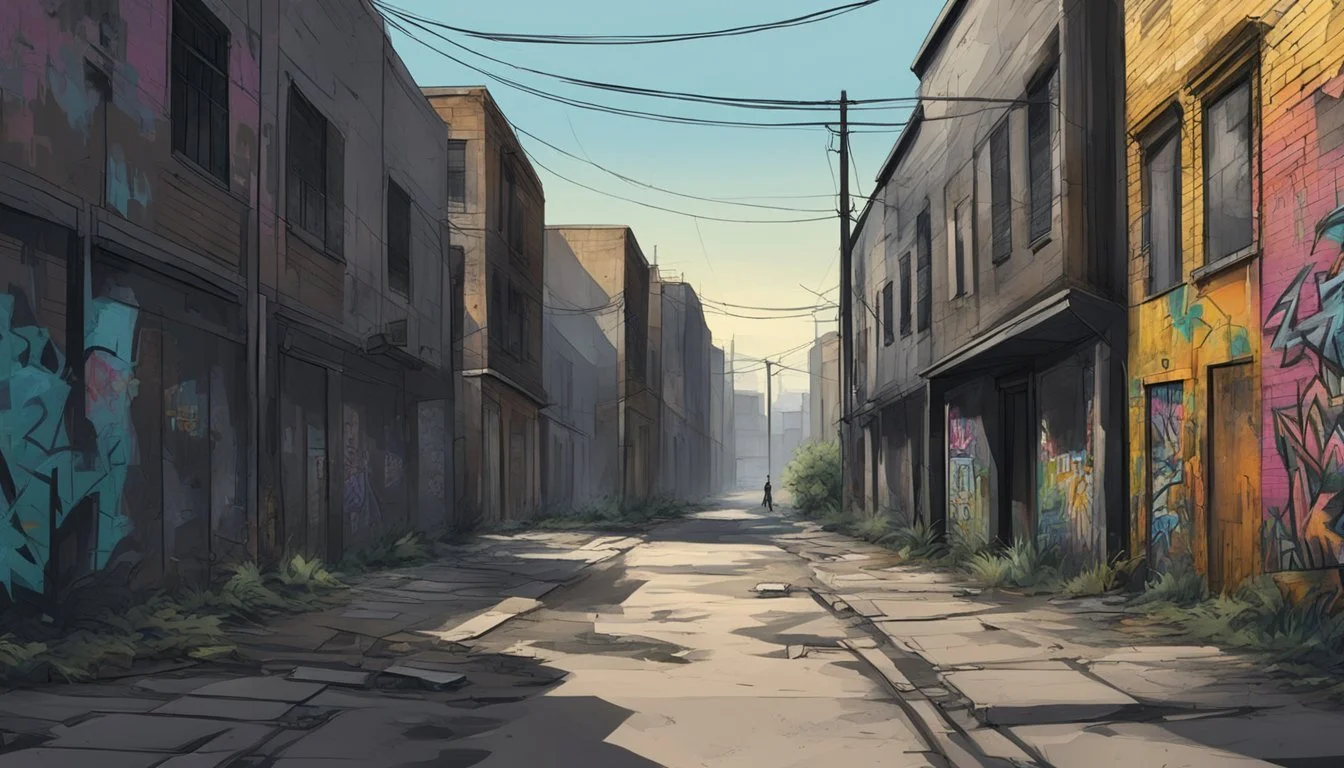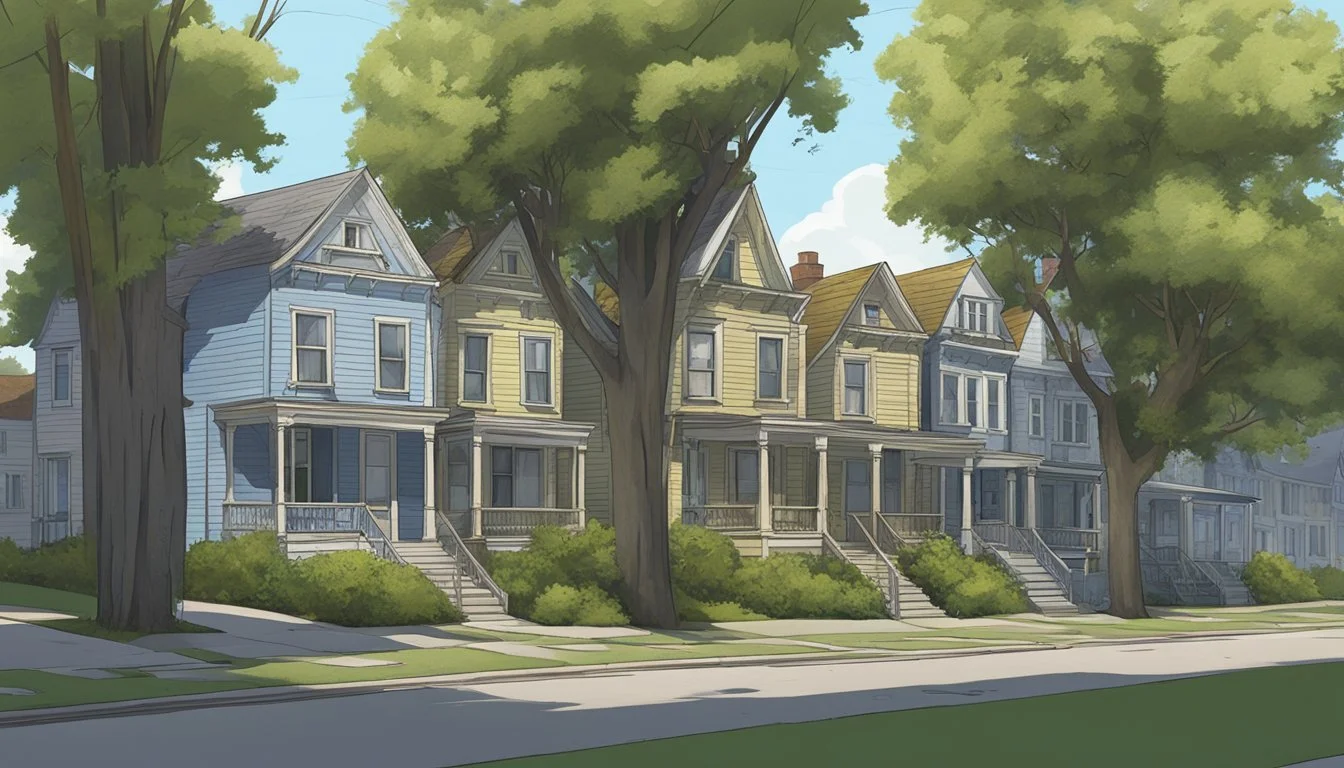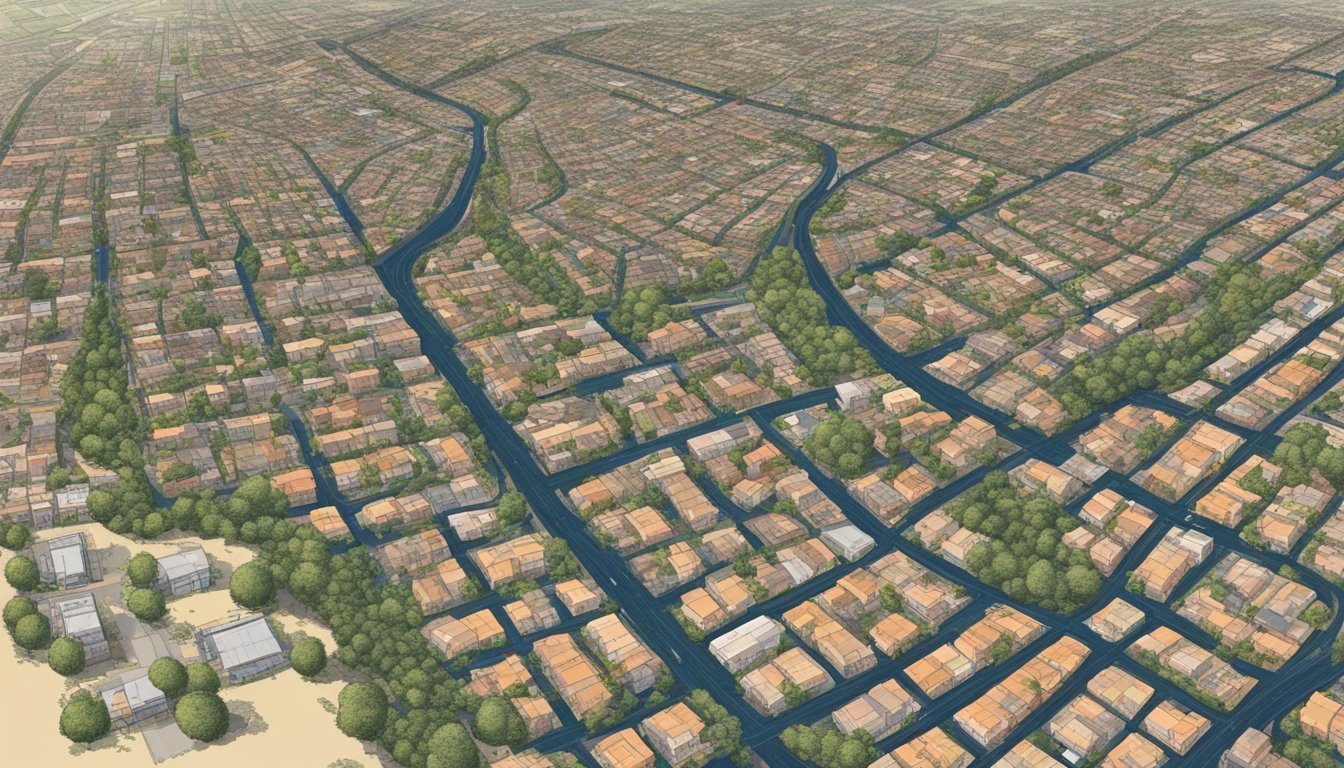Chester Turner: 5 South Central Neighborhoods Forever Changed by a Serial Killer
A Community's Haunting Legacy
Chester Turner's reign of terror in South Los Angeles during the 1980s and 1990s left an indelible mark on several neighborhoods. His brutal crimes shook communities already struggling with socioeconomic challenges and institutional neglect.
Turner's actions exposed systemic issues that allowed serial killers to operate undetected in certain areas of Los Angeles for extended periods. The case highlighted the need for improved law enforcement practices and greater attention to vulnerable populations. Turner's eventual capture and conviction brought some closure to victims' families, but the scars left on the affected neighborhoods remain visible years later.
1) Chesterfield Square
Chesterfield Square, a neighborhood in South Los Angeles, bore witness to Chester Turner's heinous crimes. This area, located near the intersection of Western Avenue and Slauson Avenue, became a hunting ground for the serial killer in the late 1980s and early 1990s.
Turner's activities in Chesterfield Square left an indelible mark on the community. The neighborhood, known for its mix of residential and commercial properties, saw increased police presence and community vigilance in response to the murders.
Several of Turner's victims were found within the boundaries of Chesterfield Square. These tragic events sparked fear among residents and highlighted the vulnerability of women in the area, particularly those involved in sex work or struggling with addiction.
The crimes committed in Chesterfield Square contributed to a broader pattern of violence that plagued South Los Angeles during this period. Turner's actions in this neighborhood underscored the need for improved safety measures and community support systems.
Today, Chesterfield Square continues to grapple with the legacy of Turner's crimes. The neighborhood has worked to reclaim its sense of security and unity in the years following his capture and conviction.
2) Exposition Park
Exposition Park, a historic neighborhood in South Los Angeles, became an unwitting backdrop to Chester Turner's crimes. This area, known for its museums and sports venues, was shaken by the discovery of victims in its vicinity.
Turner's activities in Exposition Park highlighted the vulnerability of marginalized communities. The park's mix of residential areas and public spaces provided opportunities for predators to operate undetected.
The neighborhood's proximity to other affected areas like South Central and Downtown L.A. made it part of Turner's hunting grounds. His ability to move between these locations underscored the challenges faced by law enforcement in tracking his movements.
Exposition Park's transformation in the wake of Turner's crimes included increased community vigilance and safety measures. Residents and local organizations worked to reclaim their neighborhood from the shadow of violence.
The area's resilience in the face of tragedy became evident as it continued to develop and attract visitors. Today, Exposition Park stands as a testament to a community's ability to heal and grow despite a dark chapter in its history.
3) Green Meadows
Green Meadows, a South Los Angeles neighborhood, was deeply affected by Chester Turner's crimes. This community, known for its residential character and proximity to industrial areas, became a hunting ground for the serial killer during the late 1980s and 1990s.
Turner targeted vulnerable women in Green Meadows, exploiting the area's socioeconomic challenges. His victims were often found in secluded spots or abandoned buildings, creating an atmosphere of fear and distrust among residents.
The neighborhood's struggle with drug abuse and poverty made it easier for Turner to operate undetected for years. Law enforcement faced difficulties in solving these cases due to limited resources and the transient nature of some victims.
Green Meadows saw increased police presence and community outreach programs in the aftermath of Turner's arrest. Residents worked together to improve safety measures and support systems for at-risk individuals.
The neighborhood's resilience shone through as community leaders and organizations implemented initiatives to prevent future tragedies. Green Meadows continues to heal and rebuild, striving to create a safer environment for all its residents.
4) Newton
Newton, a neighborhood in South Los Angeles, was deeply affected by Chester Turner's crimes. This area became part of the hunting ground for the notorious serial killer during his reign of terror in the late 1980s and 1990s.
Turner's actions cast a shadow over Newton's streets and alleyways. Residents lived in fear, especially women who were most vulnerable to his attacks. The community's sense of safety was shattered as news of his murders spread.
Law enforcement increased their presence in Newton as they searched for the elusive killer. Community meetings were held to discuss safety measures and share information about the ongoing investigation.
The aftermath of Turner's crimes left lasting scars on Newton. Families of victims mourned their losses, while others grappled with the trauma of living in an area targeted by a serial killer. Local organizations stepped up to provide support and resources for those affected.
Today, Newton continues to heal from the impact of Chester Turner's crimes. The neighborhood has worked to reclaim its streets and rebuild trust among residents. While the memories remain, Newton strives to move forward and create a safer environment for all who call it home.
5) South Park
South Park, a neighborhood in South Los Angeles, was deeply affected by Chester Turner's crimes. This area became part of the larger landscape where Turner committed his heinous acts during the late 1980s and 1990s.
The community, already struggling with economic challenges and the crack epidemic, faced additional fear and uncertainty due to Turner's presence. Residents became more vigilant, especially women who were the primary targets of his attacks.
Law enforcement increased patrols in South Park as they worked to solve the string of murders. The heightened police presence brought mixed reactions from locals, who wanted protection but also experienced increased tensions with authorities.
Community organizations in South Park stepped up efforts to support residents and create safer spaces. Neighborhood watch programs expanded, and local churches offered counseling services to those affected by the crimes.
The aftermath of Turner's actions left a lasting impact on South Park. While the community has shown resilience, the memory of those dark times lingers. Today, South Park continues to work towards healing and reclaiming its sense of safety.
Historical Context of South Central Los Angeles
South Central Los Angeles has undergone significant demographic shifts and urban development over the decades. These changes shaped the neighborhood's social fabric and physical landscape.
Pre-1980s Demographics
African Americans began moving to Los Angeles in large numbers after 1900. They were drawn by job prospects, affordable real estate, mild climate, and seemingly less overt racism. The area now known as Historic South Central became a hub for Black residents.
By the mid-20th century, South Central had a thriving African American community. Churches, businesses, and cultural institutions flourished. The neighborhood was home to jazz clubs and civil rights organizations.
In the 1960s and 1970s, demographic shifts accelerated. Latino immigrants, particularly from Mexico, moved into the area. This led to increased diversity but also tensions between ethnic groups.
Evolution of Urban Development
South Central's early development was shaped by its proximity to downtown Los Angeles and major transportation routes. The neighborhood grew rapidly in the early 1900s as residential areas expanded.
Industrial zones emerged alongside housing, providing jobs but also environmental challenges. The construction of freeways in the mid-20th century bisected communities and accelerated urban decay in some areas.
Economic disinvestment hit South Central hard in the 1970s and 1980s. Many businesses closed or relocated. This led to increased unemployment and poverty rates. Urban renewal projects attempted to address these issues, with mixed results.
By the late 1980s, South Central faced significant socioeconomic challenges. These conditions created an environment where crime, including serial killings, could go undetected for extended periods.
Chester Turner's Background
Chester Turner's troubled past and criminal activities paint a disturbing picture of one of Los Angeles' most prolific serial killers. His journey from a small-town upbringing to becoming the "Southside Slayer" shocked the nation.
Early Life
Chester Dewayne Turner was born on November 5, 1966, in Warren, Arkansas. He moved to Los Angeles with his mother as a young child. Turner struggled in school and dropped out before completing high school.
His early adult years were marked by instability and homelessness. Turner drifted between odd jobs and temporary living situations, unable to maintain steady employment or housing.
Criminal Activities
Turner's criminal record began in the 1980s with arrests for minor offenses. His crimes escalated over time, leading to more serious charges and prison stays.
Between 1987 and 1998, Turner committed a series of brutal murders in South Central Los Angeles. He targeted vulnerable women, many of whom were involved in sex work or struggled with addiction.
Turner was eventually linked to 14 murders through DNA evidence. His victims included an unborn child, as one of the women he killed was pregnant.
In 2007, Turner was convicted of 10 murders and sentenced to death. He received an additional death sentence in 2014 for four more murders.
Impact on Local Communities
Chester Turner's crimes profoundly affected South Central Los Angeles neighborhoods. Residents faced increased fear and anxiety, while community groups mobilized to improve safety and support victims' families.
Effect on Neighborhood Safety
Turner's killing spree instilled a pervasive sense of fear in South Central communities. Women, particularly those working in vulnerable situations, became more cautious about their movements.
Residents reported feeling unsafe walking alone, especially at night. Many businesses adjusted their hours or increased security measures. Some neighborhoods saw a decrease in foot traffic and social gatherings.
Local law enforcement faced criticism for their handling of the cases. The delay in connecting the murders and identifying a serial killer led to distrust between police and community members.
Community Response and Activism
In response to Turner's crimes, grassroots organizations emerged to address neighborhood safety concerns. Neighborhood watch groups formed, with volunteers patrolling streets and reporting suspicious activity.
Community leaders organized self-defense classes and distributed personal safety devices to vulnerable residents. Support groups for victims' families provided counseling and advocated for improved investigative procedures.
Local activists pushed for increased street lighting, security cameras, and police patrols in high-risk areas. Some organizations focused on addressing underlying issues like homelessness and drug addiction, which had made some victims more vulnerable to predators.
These efforts helped rebuild a sense of community and empowerment in the affected neighborhoods.








